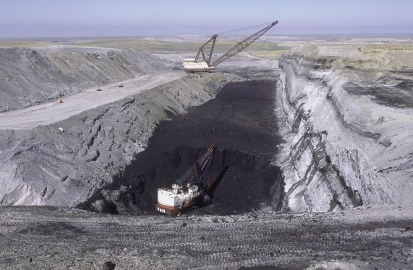 Taxpayers could be on the hook for a lot of money if many coal companies continue on their current financial trajectory. Cheap natural gas has pushed energy prices so low that many coal companies are posting significant financial losses. Some of these companies are either already pursuing or planning to file bankruptcy in the coming months. This will allow them to restructure their debt and liabilities, and that could leave taxpayers holding the bag for billions of dollars in cleanup costs.
Taxpayers could be on the hook for a lot of money if many coal companies continue on their current financial trajectory. Cheap natural gas has pushed energy prices so low that many coal companies are posting significant financial losses. Some of these companies are either already pursuing or planning to file bankruptcy in the coming months. This will allow them to restructure their debt and liabilities, and that could leave taxpayers holding the bag for billions of dollars in cleanup costs.
Arch Coal, one of the largest coal producers in the country, filed its quarterly earnings report to the U.S. Securities and Exchange Commission earlier this month, recording more than $2 billion in losses for just the third quarter. Overall, Arch has $6.5 billion in liabilities, compared to $5.8 billion in assets. Many analysts expect it to file for bankruptcy in the coming months, if not sooner. Whenever Arch does enter into bankruptcy, it will obviously have repercussions for its many creditors, not least of which is the taxpayer.
In Wyoming, where Arch is based, two of its mines – Black Thunder and Coal Creek – carry more than $450 million in bonding obligations required to cover the cost of reclamation (the process of restoring land that has been mined to a natural or economically usable state). In this case, Arch was allowed to secure so-called “self-bonds” for these mines. Other large coal companies, some of which are in similar financial straits, also have significant self-bonding obligations. Peabody Energy, the largest U.S. coal producer, has reported more than $1.3 billion in outstanding self-bonding obligations. Taxpayers hold an excess of $2.6 billion worth of self-bonds for the four largest coal companies in the U.S.
The practice of self-bonding is one that should raise concerns even when times are good for the coal industry. Congress passed legislation in the 1970s which required coal companies to ensure their mines would be reclaimed when mining finished, even in the event they go bankrupt, by posting a bond. The whole idea was to ensure the mines would not be abandoned by requiring an insurance policy that would kick in if the coal company could not pay, for whatever reason. When the Interior Department wrote the regulations, however, they created the self-bonding loophole, which essentially waives this requirement for large companies. Even if the intent was to allow smaller subsidiaries to avoid large insurance costs by allowing the parent company to backstop their financials, the parent company should still be required to get a bond on the private market to satisfy the requirements that taxpayers be held harmless.
As it turns out, the regulation has not only potentially put taxpayers on the hook for abandoned coal mines – exactly what Congress was trying to avoid – but it allowed for some shenanigans where subsidiaries were being used to mask the weaknesses of the parent company's financials. Whoops. Now, with the possibility (if not inevitability) of some large bankruptcies in the coal industry, the fears of self-bonding could be borne out. The financial strength of the coal industry has let the use of self-bonds fall under the radar for the last 30 years, but the practice is inherently at odds with its intent of protecting taxpayers from assuming the costs of mine cleanup.
Officials at the Interior Department should use this as a wake-up call that it is time to put an end to self-bonding. And in the meantime, they should take a hard look at the coal companies that have self-bonding obligations and move quickly to ensure that federal taxpayers don't end up paying to clean up their abandoned mines.










